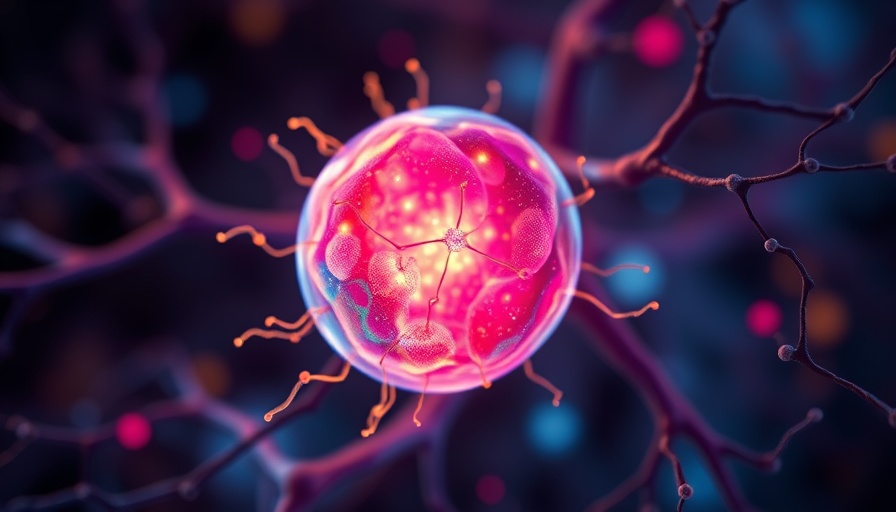
Revolutionizing Stroke Recovery with Stem Cell Transplants
As strokes become a leading cause of death and disability worldwide, the medical community faces the pressing challenge of optimizing recovery strategies. Traditional treatments typically involve breaking up blood clots within a narrow therapeutic window of four and a half hours. Yet, researchers at the Keck School of Medicine of USC have pioneered a groundbreaking approach that shows promise for stroke patients beyond that critical timeframe.
The Role of Stem Cells in Brain Repair
In a recent study published in Nature Communications, researchers explored the potential of stem cell transplantation to assist in the recovery of brain function after stroke. Specifically, the research focused on ischemic strokes, which account for almost 90 percent of all stroke cases and are caused by restricted blood flow to the brain. By administering stem cells one week post-stroke in a murine model, the team observed marked improvements in brain tissue recovery.
Unlike traditional therapies, this experimental method aims to extend patient eligibility for treatment. According to Dr. Ruslan Rust, the co-corresponding author of the study, there are numerous patients unable to access timely acute treatments due to delayed presentation. If stem cell therapy transitions successfully into clinical application, it may significantly enhance recovery for individuals grappling with persistent symptoms or severe strokes.
How the Research Works: From Blood to Neurons
In this innovative study, the research team reprogrammed human blood cells into neural stem cells capable of maturing into neurons. They then transplanted these stem cells into the damaged brain tissue of mice that had experienced ischemic strokes. The results were compelling: after five weeks, the transplanted group exhibited less inflammation, greater neuronal and blood vessel growth, and improved neural connectivity compared to control mice that did not receive transplants.
This process highlights not only the efficacy of stem cell therapy but also its potential to rehabilitate the blood-brain barrier—a crucial filter ensuring harmful substances do not infiltrate the brain. The thought-provoking aspect of this development is the possibility that even patients with significant brain damage could see a return to functional levels.
Technological Advances in Measuring Recovery
Understanding mouse recovery post-stroke presented unique challenges. To more accurately evaluate their progress, the research team employed advanced technology, using artificial intelligence to analyze the movements of the animals as they navigated various tasks. By quantifying changes in motor function, particularly during climbing exercises, they gained a richer understanding of recovery, revealing increases in fine motor skills and significant improvements in gait.
Dr. Rust emphasized the value of these data-driven insights, stating that the unbiased perspective provided through deep learning tools yielded a more detailed view of the recovery process within the complex biological landscape of neural healing.
Implications for Patient Care
The findings underscore a potential shift in post-stroke treatment paradigms. As concierge health practitioners, understanding these advances equips you to anticipate and apply leading-edge approaches in patient care. Stem cell therapy may evolve to be part of an integrated framework aimed at improving functional outcomes for patients who have experienced strokes, particularly those outside the immediate treatment window.
A Look Ahead: What This Means for Future Stroke Treatments
The promising results from this study raise important questions about practical implementation. As research develops, there may be a need for updated protocols surrounding post-stroke care, including considerations for patient eligibility for stem cell therapy. Additionally, regulatory environments will play a crucial role in determining how swiftly such innovations can be adopted in clinical settings.
For health practitioners focusing on integrative approaches, staying informed about the latest advancements in stroke recovery technologies will be vital in delivering optimal patient outcomes.
Actionable Insights for Practitioners
Through understanding new research findings, healthcare providers can innovate their practice. Keeping abreast of these developments ensures that you are well-equipped to discuss emerging treatment options with your patients. Further, collaborating in multi-disciplinary teams that include stem cell research experts could open gateways to integrating cutting-edge treatments into practice.
 Add Row
Add Row  Add
Add 




Write A Comment